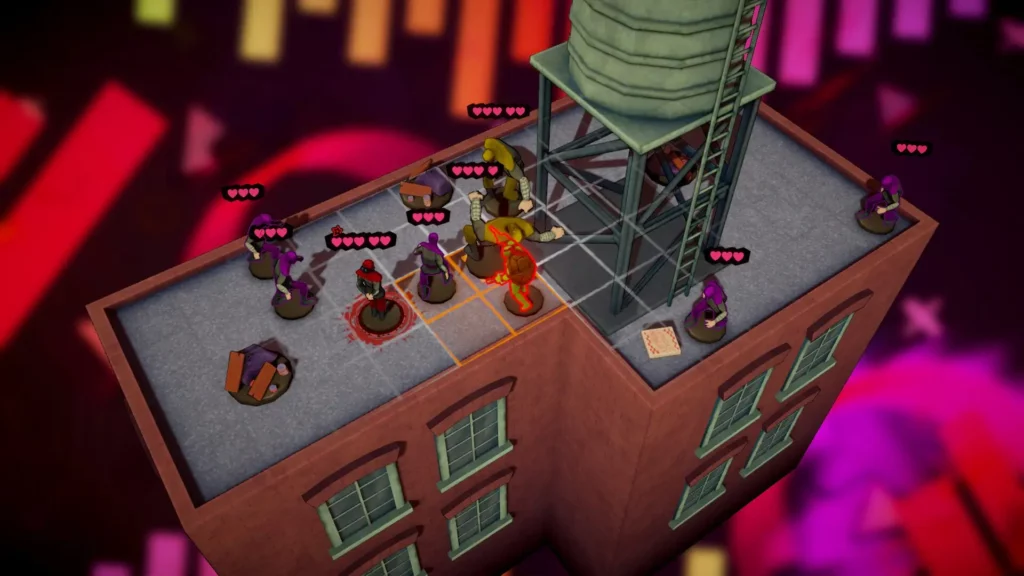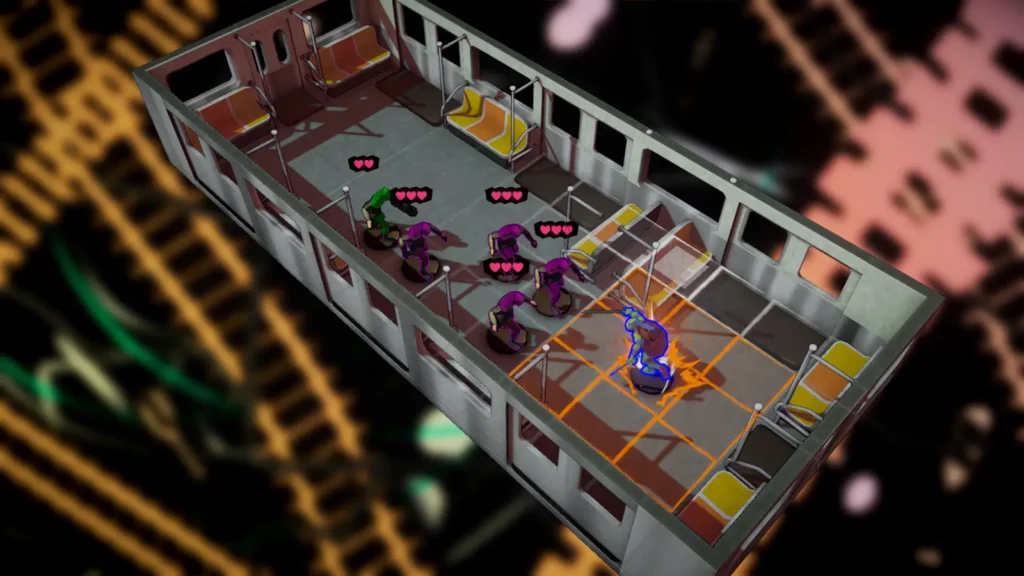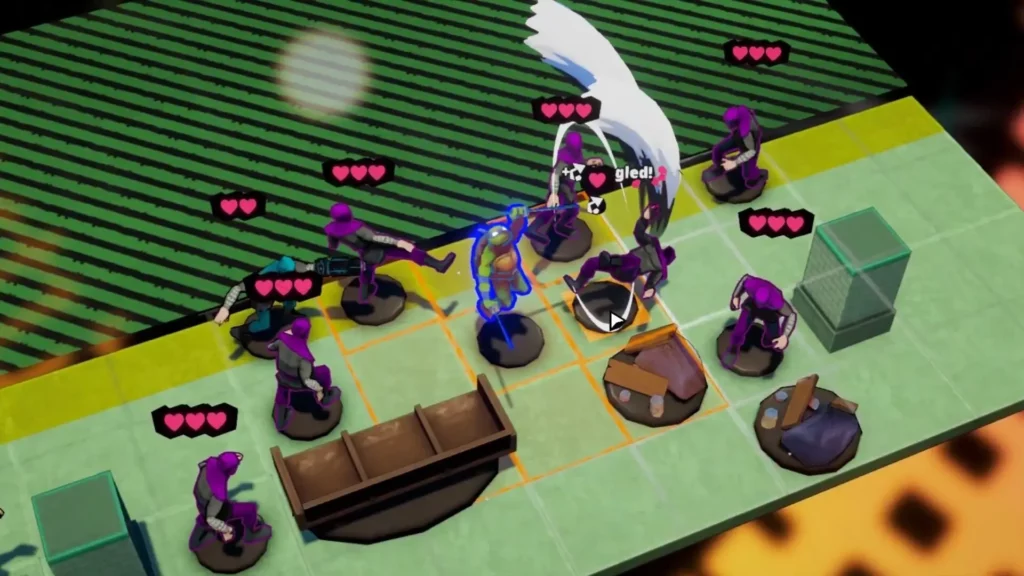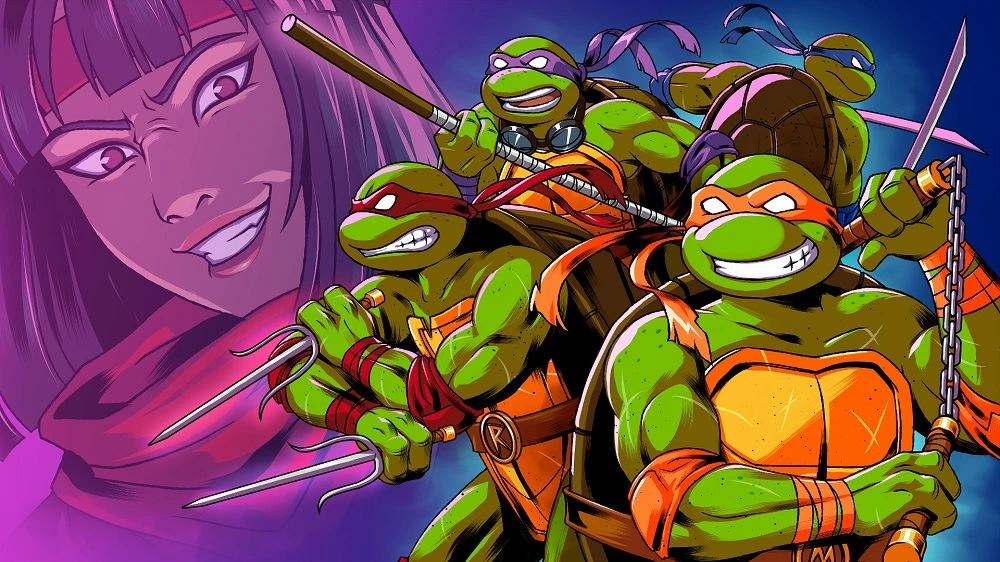Launching into action with no delay, Teenage Mutant Ninja Turtles: Tactical Takedown surprisingly blends the pick-up-and-play fun of arcade hits like Turtles in Time with the slower pace of tactical strategy. The game translates the quick thrills and lighthearted attitude of classic beat-em-ups into turn-based battles, creating a focused, accessible experience. While it doesn’t include the nuanced tactical communication found in deeper games of the genre, it succeeds in delivering an engaging, shell-swinging ride through New York with everyone’s favorite sewer-dwelling siblings.
A Simple Story with Emotional Resonance
Tactical Takedown skips an elaborate setup and dives into the conflict within minutes. As expected, the Foot Clan is once again plotting chaos, this time led by Karai—Shredder’s daughter—alongside the returning villainous scientist Baxter Stockman. Narrative content is minimal, communicated through brief text boxes at the start and end of each mission. Still, the game finds time to explore themes of loss and emotional growth, especially as it pertains to the bond between Leonardo and Raphael, offering surprising emotional weight in its short scenes.
Solo Missions That Let Each Turtle Shine
In a twist from traditional team-based gameplay, every mission focuses on a single turtle. Each brother faces challenges on their own turf, without backup. While the concept of separation is central to the story, the execution in the final act underdelivers on its emotional promise. That said, the solo approach allows each turtle to display their own unique style and strengths in battle.
Characters are presented as grid-based figurines, almost resembling board game miniatures. Though they change stances to reflect actions, the overall aesthetic is static. The design pays homage to the comic book roots of Eastman and Laird, but the lack of dynamic camera work or voice acting can make these vibrant characters feel unexpectedly lifeless at times.


Unique Combat Styles Rooted in Personality
Each turtle shares basic mechanics—six health points, six action points, and three continues—but their abilities reflect their individual personalities and weapon choices. Leonardo brings clean, rhythmic attacks that flow well in confined spaces like subway corridors. His buffs and debuffs offer tactical advantages that let him breeze through encounters unharmed.
Donatello, on the other hand, excels with map control. Using traps and his bo staff, he turns the environment to his favor, with poisonous water and electric hazards creating strategic zones. Raphael embraces brute strength, slamming foes off rooftops and chaining attacks for bonus points and added damage. His aggressive style is rewarding and visceral.
Michelangelo rounds out the team with agility and flair. His skateboard adds high mobility, letting him bounce across stages quickly. He uses environmental objects in battle, much like a martial arts movie hero, bringing a high-energy flair that reflects his carefree persona.
Deep Customization Hidden Beneath the Surface
Players can unlock new abilities through a shell-based shop system. These upgrades are earned based on performance but aren’t essential for completing the main campaign. Many players might even finish the roughly six-hour story before discovering how extensive the skill customization can be. Once high scores become the goal, however, these abilities open up new strategies and offer satisfying ways to enhance each turtle’s kit.
Raphael’s additional abilities, for example, include strong attacks with self-damage trade-offs, balanced by healing moves that restore health. This level of customization allows for varied builds that encourage experimentation and replayability.
Communication Shortfalls in a Strategy Game
A core issue with Tactical Takedown lies in how poorly it communicates essential mechanics. Some abilities reference areas of effect in vague terms like “1-meter cone” without visual guides, and certain debuffs are left unexplained until mid-battle. Strategy games typically provide clear feedback on buffs, debuffs, and hit percentages, so their absence here is noticeable.

While hovering over enemies doesn’t reveal current effects as in many other tactics titles, a separate inspection mode must be used instead. Hitting the Tab key helps preview moves, but statistics like dodge chance remain unclear, and discovering how moves work often requires frustrating guesswork.
Repetitive Yet Rewarding Battles
Once the mechanics become familiar, the rhythm of battle becomes satisfying. Effects are represented with visual cues—stance changes, animations, and cartoon effects—that eventually allow players to rely less on UI and more on pattern recognition. However, the game plateaus quickly. After playing each turtle’s first mission, most enemy types and obstacles are already introduced. The game doesn’t evolve much beyond that, and challenge only noticeably ramps up in the final mission.
While the narrow design scope echoes the simplicity of classic arcade games, it also limits the game’s replay value. What keeps the game going is the thrill of executing perfectly timed combinations and clearing a stage in one turn using a deep understanding of each character’s abilities.
Score Chasing and Combat Style
In classic arcade tradition, every mission is scored. Taking down enemies in quick succession boosts your multiplier, encouraging efficient and flashy play. End-of-level scores consider knockouts, damage taken, and remaining continues, rewarding players with more shells and higher grades.
This arcade scoring system is a fun incentive to revisit levels and try new strategies. However, where the game falls short is in its boss design—there are few bosses, and most of them are forgettable. Only the final fight offers a truly memorable experience. More disappointing is the absence of proper team-up missions. Given that the turtles are strongest when together, the lack of joint battles feels like a missed opportunity.
The fourth chapter does attempt to address this, but not in a way that truly captures the dynamic chemistry of the group.
Final Verdict
Tactical Takedown is a smart homage to the TMNT legacy, blending strategic gameplay with beat-em-up roots. Its visual style, clever movesets, and personal story arcs help carry it through its limitations. Despite its narrow content variety, lack of strong boss battles, and minimal mechanical transparency, the game manages to deliver an enjoyable, quick tactics experience.
It may not reinvent the strategy genre, but it offers a nostalgic and entertaining trip through the sewers—complete with pizza, Foot Clan chaos, and solo turtle mayhem.
